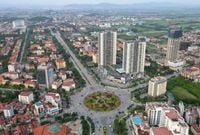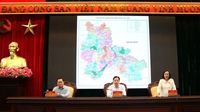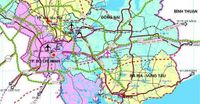On April 14, 2025, Deputy Prime Minister Nguyen Hoa Binh signed Decision No. 759/QD-TTg, which approves a significant plan for reorganizing administrative units at all levels and establishing a two-level local government model in Vietnam. This decision marks a pivotal step in streamlining the administrative framework of the country, aiming to enhance governance efficiency and development.
The plan outlines critical principles for the reorganization of administrative units, emphasizing not only the traditional criteria of natural area and population size but also incorporating historical, cultural, ethnic, geographical, and socio-economic factors. This comprehensive approach reflects the government's commitment to creating new administrative units that meet both administrative requirements and the unique developmental potential of various regions.
The overarching goal of the plan is to foster national development, expand the operational space for new administrative units, and leverage the leadership roles of dynamic regions and economic corridors. Notably, the plan prioritizes the arrangement of administrative units in mountainous and delta areas alongside coastal units, demonstrating a strategic vision for maximizing the economic potential of maritime resources and facilitating regional development.
Moreover, the plan mandates a harmonious integration of adjacent administrative units to promote mutual support and drive collective economic growth. It also emphasizes the establishment of free trade zones, industrial parks, urban areas, seaports, logistics, water reservoirs, and hydroelectric dams within the jurisdiction of single commune-level administrative units for better governance.
One of the critical aspects of the reorganization involves the naming of new administrative units. The plan stipulates that the names must be carefully considered, taking into account historical and cultural significance. The priority is to retain names from previous units to minimize disruption for residents and businesses. New names should be easily recognizable, concise, and reflect the locality's advantages while aligning with integration trends.
Another essential component is the selection of administrative-political centers. The plan suggests that the new centers should be chosen from existing units to ensure stability in local governance. These centers must possess favorable geographic locations, comprehensive socio-economic infrastructure, and strong transportation links to other regions.
As part of the reorganization, the plan proposes six key criteria for restructuring provincial-level administrative units: natural area, population size, historical and cultural criteria, economic criteria, political criteria, and national defense criteria. These criteria are designed to ensure a systematic and objective approach to the restructuring process, tailored to the realities of each locality.
A total of 52 provincial-level administrative units will undergo reorganization, which includes four cities—Hai Phong, Ho Chi Minh City, Da Nang, and Can Tho—and 48 provinces. However, Cao Bang province is exempt from reorganization due to its lengthy border with China, complex mountainous terrain, and a significant ethnic minority population.
The specific reorganization plans detail the merging of provinces and cities, renaming units, and establishing administrative centers. For instance, the merger of Ha Giang and Tuyen Quang provinces will create a new province named Tuyen Quang, with its administrative center located in the current city of Tuyen Quang.
In Ho Chi Minh City, the 39th Conference of the City Party Committee has proposed reducing the number of commune-level administrative units from 273 to 102. This reduction will consist of 78 wards and 24 communes, resulting in a decrease of 171 units, or approximately 62.64%. This plan also involves adjusting administrative boundaries in areas with overlaps, such as between Thu Duc City and Binh Duong province.
In Nghệ An province, the Provincial Steering Committee for the rearrangement has convened to implement key aspects of the plan. The committee, led by Secretary Nguyen Duc Trung, is tasked with overseeing the reduction of commune-level administrative units by nearly 68.5%, from 412 to approximately 130 units. This ambitious goal is to be achieved by May 1, 2025, when the province must submit its project for approval.
During the meeting, Secretary Trung emphasized the importance of this reorganization for improving the efficiency of local governance and ensuring that administrative units are closer to the people. The focus is on creating a government that is responsive and effective in serving its citizens.
The plan also highlights the need for careful management of the transition process to minimize disruptions in public services and administrative functions. This includes ensuring that the number of administrative units is manageable and that they do not become overly large or distanced from the communities they serve.
As the reorganization unfolds, the government aims to maintain a balance between efficiency and accessibility, ensuring that the new administrative structures are well-equipped to handle the needs of the population. The emphasis is on creating a streamlined governance model that is adaptable to the dynamic socio-economic landscape of Vietnam.
In conclusion, Decision No. 759/QD-TTg represents a transformative step towards modernizing Vietnam's administrative framework. By prioritizing efficiency, local engagement, and strategic development, the government is laying the groundwork for a more responsive and effective governance model that aligns with the country's aspirations for growth and integration.








